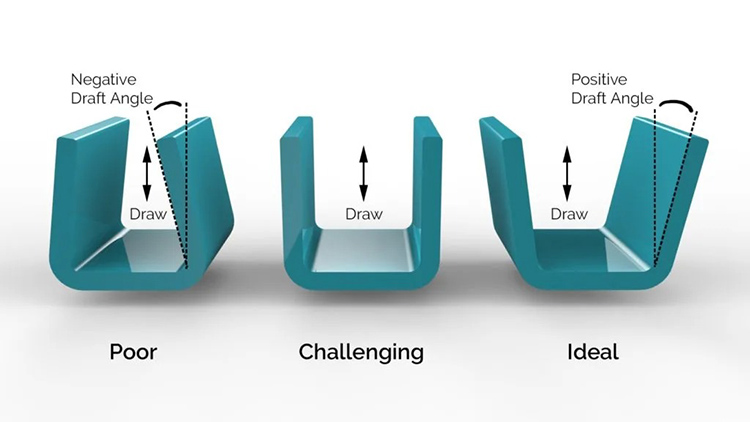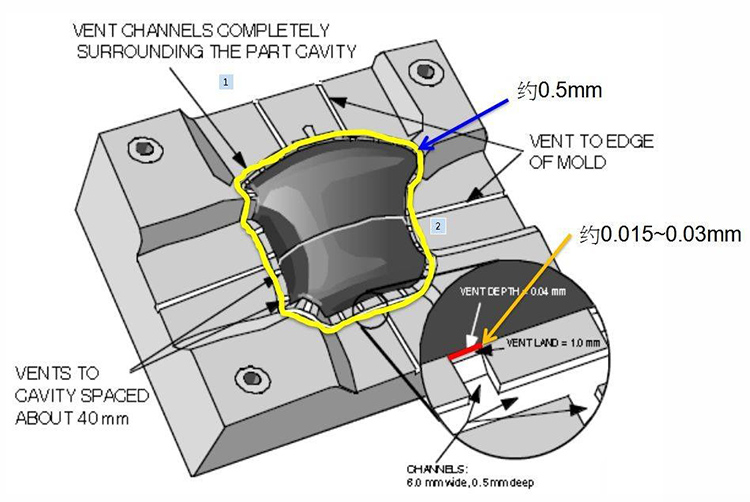Injection molding is one of the most widely used production processes in the modern plastic processing industry. Especially in the packaging industry, injection molding technology has become the primary method for producing high-quality plastic products. However, common defects during the injection molding process, if not effectively addressed, can negatively impact product quality and production efficiency. As a company specializing in plastic products and mold development, Okman Packaging Technology (Shanghai) Co., Ltd. has accumulated extensive experience, especially in the injection molding of PMMA (polymethyl methacrylate), engineering plastics, and eco-friendly PLA materials. The company has developed effective solutions for addressing and resolving these issues.

1. Common Injection Molding Defects
Various defects may occur during the injection molding process, affecting the appearance, functionality, and even safety of the product. Below are some common injection molding defects with brief explanations:
Air Bubbles: Air bubbles often appear on the surface or inside of plastic products, severely affecting their appearance and mechanical performance. The formation of bubbles may be caused by high moisture content in the raw materials, improper injection molding machine temperature, or mold design issues.
Warpage: Warpage refers to uneven shrinkage of the plastic product during cooling, causing deformation. Warpage is typically caused by uneven mold temperature, improper injection speed, or uneven cooling.
Short Shot: Short shot occurs when the plastic material does not completely fill the mold, resulting in missing or incomplete parts of the product. The reasons for short shot include insufficient injection pressure, improper mold design, or poor flowability of the material.
Flow Marks: Flow marks are streaks or lines on the surface of a product caused by uneven plastic flow during molding. Flow marks are often caused by excessive injection speed, low injection pressure, or poor mold design.
Burn Marks: Burn marks are discolorations or charred areas on the surface of a product, usually caused by excessive temperatures or prolonged overheating of the plastic material. Burn marks not only affect the appearance but also reduce the product’s durability.
Cold Slug: Cold slug occurs when solidified plastic blocks the nozzle or flow channels of the injection molding machine, leading to production interruptions or defective products.
2. Causes of Injection Molding Defects
Injection molding defects usually stem from multiple factors, including the injection molding machine, mold design, raw materials, and operating processes. The causes can be analyzed from the following aspects:
1. Improper Injection Molding Machine Parameters
The settings of the injection molding machine, such as temperature, pressure, speed, and injection volume, directly affect the quality of the molded product. If these parameters are not set correctly, it may lead to defects such as air bubbles, warping, or short shots. For example, excessively high temperatures can lead to burn marks or bubbles, while low temperatures can result in poor flowability and short shots.
2. Mold Design Issues
Mold design is a critical factor in the injection molding process. Problems such as uneven mold temperature distribution, improper venting design, and poorly designed flow channels can lead to defects such as warping, air bubbles, and flow marks. The design of the cooling channels in the mold is also an important factor influencing product quality.
3. Raw Material Quality Issues
The selection and quality of raw materials directly affect the smoothness of the injection molding process. If the raw material has high moisture content or substandard quality, defects such as air bubbles and short shots are likely to occur. At Okman Packaging Technology (Shanghai) Co., Ltd., we place particular emphasis on the selection of raw materials, especially in the production of PMMA, engineering plastics, and eco-friendly PLA. We strictly control the quality of raw materials to ensure each batch meets the required standards.
4. Improper Operating Techniques
Improper operating techniques, such as insufficient skill of operators or inadequate control of the production environment, may also contribute to injection molding defects. For complex injection molding products, precise operation is crucial to ensure product quality.
3. Solutions from Okman Packaging Technology (Shanghai) Co., Ltd.
With extensive experience in the injection molding field, particularly in the molding of PMMA and engineering plastics, Okman Packaging Technology (Shanghai) Co., Ltd. is highly proficient at identifying and solving various injection molding defects. Here are some of our solutions:
1. Optimizing Mold Design
We ensure uniform temperature distribution in the mold and optimize the design of flow channels and venting systems to reduce warping, flow marks, and air bubbles. Additionally, we customize molds based on the specific characteristics of different products to ensure the stability of the injection molding process and the consistency of the products.
2. Precise Control of Injection Molding Machine Parameters
At Okman Packaging Technology (Shanghai) Co., Ltd., we rely on advanced injection molding equipment to precisely control machine parameters such as temperature, injection pressure, and injection speed, ensuring that each step of the process is optimized to prevent defects such as burn marks, air bubbles, and short shots.
3. Strict Control of Raw Material Quality
We pay close attention to the selection of raw materials, using high-quality PMMA, engineering plastics, and eco-friendly PLA. We ensure the materials are adequately dried and meet strict quality standards to control defects at the source.
4. Advanced Production Processes and Technologies
We continuously improve our production processes, incorporating advanced techniques such as heat transfer printing, vacuum coating, and ultrasonic treatment to further enhance the precision and stability of the injection molding process. For complex products, we also use simulation software for early-stage design and testing to avoid potential defects.
5. Comprehensive Quality Control System
Okman Packaging Technology (Shanghai) Co., Ltd. has established a comprehensive quality control system. Every product undergoes rigorous quality inspection and checks during the production process to ensure that each product leaving our facility meets the highest quality standards.
4. Conclusion
Injection molding is a highly technical process that involves various aspects such as equipment, mold design, materials, and operation. By continually optimizing these elements and reducing the occurrence of defects, production efficiency can be improved, and product quality can be guaranteed. Okman Packaging Technology (Shanghai) Co., Ltd., with its extensive experience in injection molding, mold development, material selection, and production processes, is committed to providing high-quality plastic products and packaging solutions to its clients. Whether it is PMMA, engineering plastics, or eco-friendly PLA, we have a mature technological system to effectively address and solve common injection molding defects, offering customers high-quality services.
If you have injection molding-related needs or questions, feel free to contact us. Okman Packaging Technology (Shanghai) Co., Ltd. is dedicated to providing you with professional technical support and solutions.


